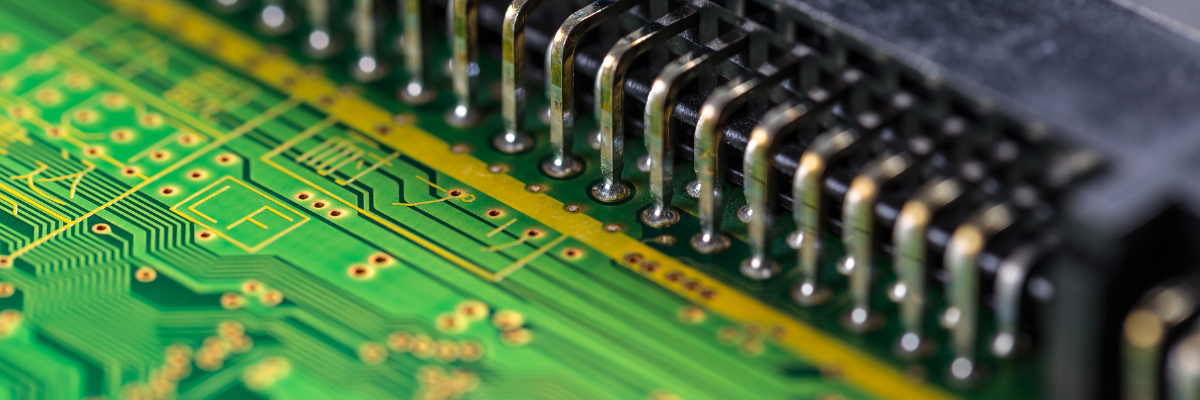How Are Sustainable PCB Practices Reshaping The Electronic Industry?

How Are Sustainable PCB Practices Reshaping The Electronic Industry?
The printed circuit boards (PCBs) power our gadgets, appliances, and devices. Although they may be small, their manufacturing and assembly come with environmental consequences. Traditional PCB manufacturing is energy-intensive, involving epoxy resin, copper, water, glass, and several wasteful processes. At the end of the product lifecycle, the printed circuit boards end up in landfills. According to various studies, currently, there are more than 40 million tons of electronic waste in the world, and of them, two million waste comes from printed circuit boards only. Further, improperly handling of these printed circuit boards can lead to environmental problems and threaten human health. This is why there’s a growing movement towards sustainable PCB practices among electronic OEMs. What are these practices? This post focuses on sustainable PCB design, manufacturing, and assembly practices.
The following are a few popular eco-friendly materials used in PCB manufacturing and assembly.
-
Biodegradable Substrates: The PCBs feature fiberglass epoxy substrates, which release harmful chemicals when incinerated. The electronic OEMs are choosing biodegradable substrates such as cellulose nano-fiber, cellulose, and sodium carboxymethylcellulose (Na-CMC) substrates over epoxy substrates. Like their epoxy counterparts, these substrates offer several advantages such as moisture sensitivity, flexibility, recyclability, low cost, and cause no harm to humans or the environment.
-
Lead-Free Solder: Traditional PCBs feature lead solder and flux, which can produce fumes or dust on incineration. These fumes are harmful to human health. Further, the lead solders may contaminate soil and water if improperly disposed of. This is why lead-free solder alternatives featuring antimony, bismuth, copper, nickel, silver, and zinc are gaining popularity. Although these lead-free solders may have their own downsides in some applications, there is ongoing research on improving their quality and capabilities for high-speed applications.
-
Water-based Inks and Coatings: Traditional coatings and inks used in the PCB assembly contain volatile organic compounds (VOCs). Water-based alternatives help reduce the impact of VOCs during the assembly.
-
Recycled Metals: Copper is used as a conductor in the PCB. Although this is one of the world's oldest metals, its extraction process is laborious and energy-intensive. Copper extraction is environmentally damaging, too. To minimize their carbon impact, nowadays, many OEMs are considering recycled copper in their PCBs.
-
Halogen-Free Materials: Traditional PCBs use halogenated flame retardants that are known to release toxic gases on incineration. Thus, halogen-free PCBs featuring phosphorus and phosphorus-nitrogen are gaining popularity. These halogen-free materials offer benefits such as improved insulation, low water absorption, excellent thermal stability, and, above all, reduced risk of environmental pollution.
An Overview of Eco-Friendly Processes Used in PCB Manufacturing and Assembly
As said before, PCB manufacturing and assembly involve several processes that may have negative environmental impacts. Processes such as electroplating, etching, printing, and so on produce lots of chemical waste, which is hazardous if not handled properly. Additionally, many processes consume significant amounts of water, which ultimately gets converted into wastewater, requiring further processing. Keeping these in mind, nowadays, PCB manufacturers are investing in one of the following eco-friendly processes that help reduce the impact on the lives of humans and the environment.
-
PCB manufacturing uses organic solvents in many phases, such as etching and cleaning. These solvents are known to produce volatile organic compounds (VOC) emissions. However, using water-based solvents helps reduce these emissions and contributes to a cleaner environment. But that is not enough, the water-based solvents may still produce lots of wastewater. Thus, adopting water-saving technologies and implementing in water recycling systems help mitigate water usage and minimize the environmental impact.
-
Energy consumption is one of the key concerns among PCB manufacturing and assembly services. This is mitigated by using energy-efficient manufacturing processes such as using energy-efficient machines for assembly, employing low-temperature soldering, etc.
-
Efficient layout planning, as well as recycling, helps reduce production waste. To mitigate this, many PCB manufacturing and assembly services invest in closed-loop systems, allowing them to reuse some materials across processes and minimize waste. In addition, employing techniques like 3D printing and focusing on energy-efficient designs help reduce waste.
-
Sourcing high-quality raw materials from trusted suppliers committed to sustainability and ethical practices ensures transparency and accountability throughout the supply chain. Prioritizing local sourcing reduces transportation-related emissions and supports the local economy.
-
Sustainable practices extend beyond sourcing raw materials and manufacturing. They also include logistics and packaging. Nowadays, whenever and wherever applicable, many PCB assembly services use recyclable packaging materials while shipping the PCBs. Also, they are focusing on eco-friendly transportation options.
What are End-of-Life Considerations for PCB?
The environmental impact of PCB is not limited to manufacturing and assembly; rather, it extends to their end-of-life cycle. This is where the following end-of-life considerations can make a difference.
-
Recycling Programs: Electronic OEMs can establish recycling programs encouraging customers to return their damaged products and components including PCBs for proper disposal. This allows them to reuse the metals extracted from the PCBs, like copper, in their projects and reduce their dependency on virgin resources.
-
Design for Disassembly: Assembling PCBs for quicker disassembly facilitates easier component separation during recycling or refurbishment. Many electronic OEMs are investing in modular designs that enable selective component replacement during replacement. This also helps save time in reverse engineering and reduce electronic waste.
In conclusion, sustainable PCB practices are essential for mitigating the impact of PCB manufacturing and assembly on the environment and people. Whether you're an OEM or a hobbyist, incorporating sustainable practices into PCB manufacturing and assembly will benefit you personally as well as the planet in the long run. Let's embrace sustainability and pave the way for a greener electronics.

